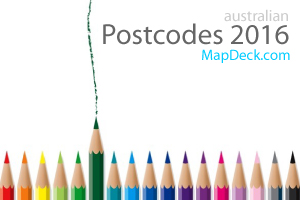Australian federal election is still more than a week away but some have already decided the result is a forgone conclusion. In particular, an online bookmaker sportbet.com.au is so certain the Coalition will win the election it has paid out all bets on that outcome. It is probably just a PR stunt. So meantime, before we have any confirmation of the real outcome, have a look a map published by The Age which presents how Australians cast their votes at the last election in 2010. Using data from the Australian Electoral Commission they have been able to map out the two-party preferred vote for every polling booth throughout Australia.
The map was created by Geoplex, GIS consultancy based in Canberra and Melbourne, using open source mapping application Leafletjs and data served by CartoDB (cloud based GIS solution).
First spotted on spatialsource.com.au
Thursday, August 29, 2013
Subscribe to:
Post Comments (Atom)




6 comments:
That's a nice tidy map.
Shows one of the commonest difficulties in Australian cartography - most of the action is in a tiny minority of the area. Ideally you don't have to zoom in as far to see things in the country as in the city.
I wonder how easy it is to get that data into Mappage - I've got the votes per electorate in and that's looking nice. I can compare vote % with demographic variables - there's a 45% correlation between English-speaking-only and coalition 2PP, a 30% correlation with the number of vehicles. Large correlations between major parties & religious affiliation.
Well, that wasn't too hard. The AEC makes the data nice and easy to use.
http://mappage.net.au/?stya=pp
Colours range from red (66%+ ALP) to dark blue (66%+ coalition)
Interesting concept Eric. Mappage just seem to consume too much of browser resources... If you could make it "lighter" that would be a really good application :-)
The main thing slowing it down on startup is loading a few MB of census district related data and then processing it. (Not the boundaries or ordinary data they're only loaded as needed). Might be time to defer loading & processing of the SA1 data until it's needed.
There's also trouble when thousands of markers come into play at once. Currently clustering happens on the client side, but if I do clustering on the server side too, I might spread the load a bit.
Hi Guys you seem pretty knowledgeable about mapping. I'm from Brisbane and l I need to print a large wall map - larger than A0 with Census CCDs/LS1 Boundaries for an area about 15km wife by by about the same high. Any suggestion how or where I could achieve this?
MC
Send me an email MC (listed at the bottom of this page)
Post a Comment